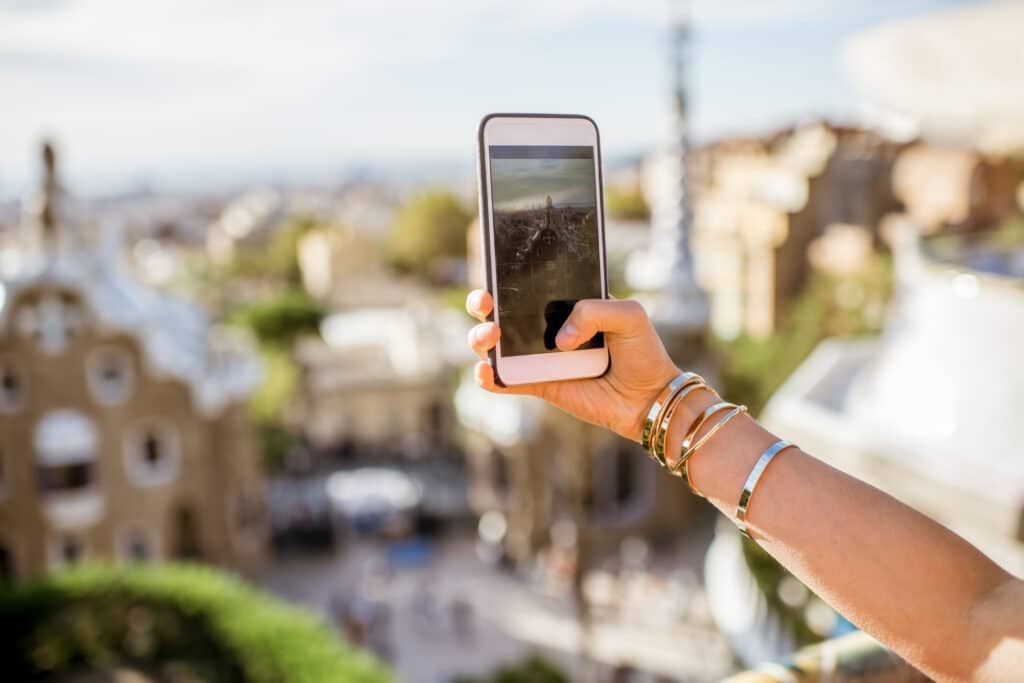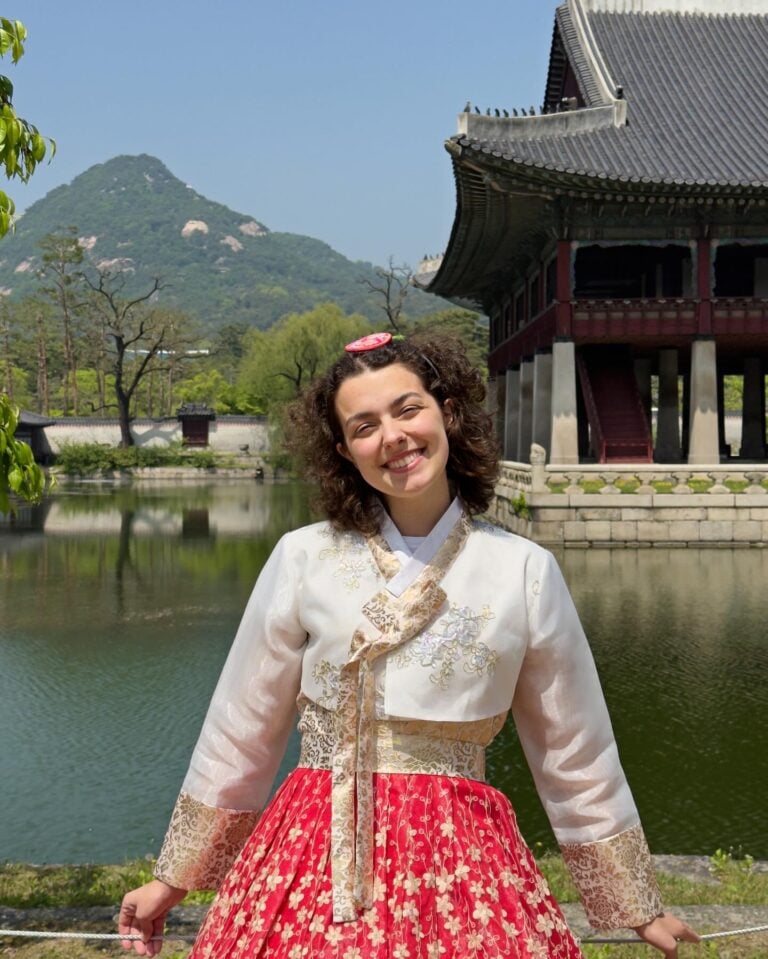How Social Media Shapes Tourism: From Overtourism to Responsible Travel
Social media’s role in deciding where we travel and what places we visit is growing every day. Between highly curated visuals, algorithm-loving hooks, and the competition for “virality”, platforms like Instagram and TikTok are now the default place for inspiration and trip planning.
But with virality placed above authenticity, social media’s influence is far from innocent. Many destinations now face overtourism, as tourists flock to the same select, viral spots like Rome, Paris, and Bali.
The issue is unfortunately much bigger than just “there’s too many people”. Overtourism strains infrastructure, erases local culture and customs, harms small businesses, and can encourage both performative or disrespectful behavior.
Because today anyone can go viral, we are all “influencers” in one way or the other. Let’s talk about the consequences of influencer travel — and most importantly, how we can bring a positive change.
Disclaimer: This post has affiliate links that can help me earn a small commission, at no extra cost to you. If you click through and purchase with these links, thank you in advance for the extra support.💖😊
The Impact of Social Media on Tourism and Destinations

What Is “Influencer Travel”?
Influencer travel is a form of tourism shaped by, and promoted through, social media — typically by content creators and influencers.
In recent years, tourism boards and destination marketing organizations (DMOs) have increasingly partnered with influencers to showcase their countries or cities.
These collaborations often result in stunning, professional grade content — creating the picture-perfect, aspirational visuals we scroll past every day on Pinterest, Instagram, or TikTok. These campaigns tend to “sell” the destination but not necessarily the true essence and story.
But influencer travel isn’t limited to those with huge followings. Today, anyone with a phone can influence where others go. One viral post can send hundreds, even thousands, of visitors to a single café, hike, or even entire city.
The “Dark Side” of Social Media Tourism
Over-tourism Fueled by Viral Spots
Overtourism happens when too many people travel to the same destination. It’s one of the biggest and worst side effects of social media-driven tourism.
Every year, destinations break the previous record for foreign tourists, showing that this global issue spreads like wildfire. For example, in 2024, Kyoto welcomed 10.88 million foreign tourists, a 53.3% increase from 2023 (JapanToday). With its narrow streets and historic temples, this city simply isn’t built for such large crowds.
Read this incredible article, that dives deep into overtourism and its negative impacts
This problematic pattern repeats across the world:
- In Santorini, travelers crowd tight alleys to re-create the same rooftop shot. You know, the one that looks over white buildings with blue rooftops and the sea.
- In Lisbon, in September 2025, one of the city’s iconic funicular cars derailed and caused 16 fatalities. While inspections were passed that morning, this tragedy shows how fragile infrastructure can become under constant use and stress.
- Barcelona had to ban tourists from filming on moving escalators after a viral Instagram Reel showed the Sagrada Família in the background.
the Problem behind the Perfect Shot
When a destination becomes a backdrop for the same viral photo, it’s easy to forget that it’s not a theme park or movie set — it’s someone’s home.
And what happens when people forget this fact? They act like theme park guests instead of respectful guests.
I’ve seen this firsthand in Japan, a country I deeply respect and admire. From yoga poses, or pull-ups, at sacred shrines to tourists blocking Kyoto’s narrow alleys or harassing Geishas for photos, it seems that the the pursuit of content seems to often outweighs cultural sensitivity.
To help and protect its people, Japan had to start implementing tourist and photo bans. For example, in Kyoto’s Gion District, some private streets forbid photos or videos, with large fines for noncompliance. Other areas explicitly state tourists aren’t allowed.
This isn’t just happening in Japan – across the globe, tourists cross cultural and ethical lines to replicate the same viral photo or clip. This problematic behavior is often born by people’s desire of replicating the same “content” they see; content that focuses on algorithms and aesthetics, and rather than its potential implications.
Economic Imbalance and local Displacement
When a destination goes viral, it can dramatically shift local economies — and often times, it’s not in a positive way.
One way overtourism negatively shifts local economies is the inevitable rise of prices and demand for short term rentals.
In Spain alone, recent enforcement efforts uncovered over 53,000 illegal tourist apartments, with 16,740 located in Andalusia. (Euronews) Not only do these rentals increase housing prices, they gentrify neighborhoods — kicking locals out of their own cities and communities.
Another issue is when only one or two, businesses go viral and they are treated as attractions. While it might be great for that one business, it can come at the expense of other small, equally deserving businesses.
For example, the café Angelina in Paris has over 17,000 reviews thanks to its viral aesthetic and thick hot chocolate. When looking at neighboring cafes and chocolatiers, very few have over 1,000 reviews. While I’m sure Angelina’s hot chocolate is incredible, I can’t help but think there must be other great places to visit.
I personally believe that tourism should benefit locals and a wider spread of businesses — not just select viral destination or hospitality businesses that are treated like attractions.
Unrealistic Expectations and Misrepresentation
With filters, perfect lighting and angles, social media has a way of making everything more magical, or exceptional, than it may actually be in person.
There’s an older travel trend on TikTok that occasionally reappears, in which people visit iconic landmarks like the Eiffel Tower, and film themselves looking unimpressed with a sound saying, “Okay… let’s go.” While the trend is funny, it highlights a sentiment that is not uncommon – especially when you read the comments.
There isn’t a study that gives exact data that I can quote, but it happens quite often where people visit a main attraction and feel underwhelmed. I’ve seen this quite often in regards of Christ the Redeemer in Brazil, the Mona Lisa, and the Spanish Steps in Rome.
That’s what happens when travel becomes about crossing off a checklist or recreating a photo, rather than truly experiencing a place. You’re physically present, but not emotionally or culturally.
For example, if you visit the Mona Lisa because you heard it’s an iconic work of art, but know nothing about the painting, you will simply see a small painting of a woman and likely be bored.
The Lost Meaning of Travel in the Age of Social Media
As a Third-Culture Kid and responsible traveler, I grew up believing that traveling is much more than landing in a new destination. It’s about connection, gaining new “eyes” (perspectives), and broadening your views.
But when social media takes the lead, that deeper purpose (of travel) often gets forgotten. Instead of slowing down to appreciate our surroundings and immerse ourselves, we chase the perfect shot, and the validation of comments and likes.
Back in high school, when Instagram was just a few years old, that’s exactly what I chased. Thankfully, as I got older, I stopped caring about the “cool meter” and the social metrics, and started to prioritize connection and diving deeper over everything.
It might sound harsh, but what’s the point of traveling if you’re treating a destination like EPCOT?
Promoting Responsible Tourism in a Social Media World
Who Is Responsible for Social Media Tourism?
As a wise man once said, “with great power comes great responsibility”. Now that anyone with a phone has the potential to go viral, this sentence can also be seen as “with great [reach] comes great responsibility”.
With millions of people watching (and repeating) what creators post, it’s no longer enough to say “I didn’t know.” Whether you have 100 followers or 100,000, your choices shape how others experience, and treat, the rest of the world.
I believe that making either a positive or negative impact is collective work. This impact and influence comes from how we:
- Tag and geotag destinations
- Share stories (with honesty and context)
- Credit local businesses, guides, and artisans
- Choose collaboration partners who align with ethical values
As an additional thought: While influencers shouldn’t be blamed for the action of their followers, they should be expected to lead by example – just like a responsible older sibling.
Using Social Media to Promote Positive Change
Social media holds tremendous power, and if we use it mindfully, we can create a positive impact. Some ways we can do this is by:
- Tell the full story, and showcase the true essence — not just the highlights or viral spots.
- Amplify local voices and promote local, or small, businesses.
- Promote lesser-known destinations. This helps spread crowds, but also support a “smaller” destination economically.
- Encourage slow, intentional travel where connection matters more than content.
When we use our platforms in a mindful manner, travel content becomes more than inspiration. It becomes a tool for empathy, awareness, and change.
What Responsible Travel Looks Like in 2026
Responsible Tourism is both one of the simplest and most important ways to travel.
If you treat others the way you’d want to be treated, and make an effort to understand the places you visit, you’re already one step ahead.
Here are 4 ways to be a Responsible Tourist:
- Research the destination before visiting.
- Respect local customs, people, and the environment.
- Support locally owned businesses. This can be hotels, cafes, artisans, and beyond.
- Travel during shoulder season to reduce crowds and overtourism strain.
Want more tips? Here are all the 13 ways to be a Responsible Tourist!
My Final Thoughts on Social Media Tourism and Influencer Travel
Particularly this past year, I’ve been constantly reflecting on how much social media shapes the way we travel. Whether you’re an influencer, a brand, or just a traveler with a phone — you have influence, and your actions matter.
The next time you post, I invited you to ask yourself:
– Is my content helping or harming?
– Am I creating for meaning or for the algorithm?
– Am I encouraging people to travel with care or just to chase attractions?
As travelers, we have the power to shift how places are seen, and even how they’re treated by fellow tourists. The places we visit deserve more than a perfect photo. They deserve our respect.
I have to ask…
What are your thoughts on social media’s impact on travel and tourism? Before you post, do you think about what impact your content could make – positive or negative? Let me know in the comments!☺️👇
Share this with family and friends who would enjoy, or learning something new, from this thought-piece.🤩
Follow me on YouTube for my travel videos and other worldwide adventures, or on Instagram!🗺️



